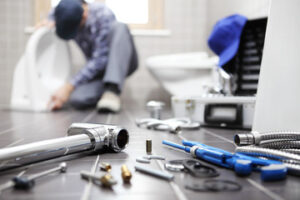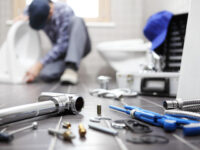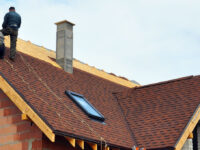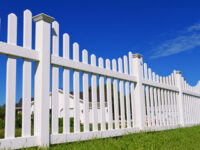How to Protect Your Plumbing From Freezing
Plumbing is a system of pipes and fixtures that conveys water and other liquids for drinking, heating, cooling, washing, cooking, and waste disposal. It is distinct from the water and sewer systems that transport sewage and other wastes to and from buildings.
While you should always call a professional plumber for severe issues, you can use many plumbing hacks to prevent or fix minor problems. Contact Woodlands Plumbing to save money and time from unclogging drains to fixing a leaky faucet.
The foundation of your home provides support for its entire structure, and it will naturally move and shift as the soil underneath it settles or expands. In some cases, this movement and shifting can cause cracks in the foundation. Small hairline cracks in the foundation are typically not a big deal, but they should be taken care of quickly to prevent moisture and dirt from entering.
When it comes to foundation crack repair, there are a few methods that can be used to keep out moisture, soil smells, and even radon gas. However, a professional should always be consulted to perform the repair. A few preventive measures include removing foundation plantings, installing guttering and downspouts to divert water away from the foundation wall, and ensuring that the yard has a 2 percent slope or more away from the foundation to help with drainage.
Vertical and diagonal cracks in foundation walls typically result from the house settling after it’s built, or shrinkage in concrete. If they’re less than 1/8 of an inch wide, they don’t usually indicate a major problem and can be sealed with concrete crack filler.
If the cracks are wider than this, you should consider calling a professional for an evaluation as they may indicate soil heaving or shifts downhill that could affect other areas of your home and lead to serious problems. Another sign of a potential problem is the presence of horizontal cracks in your foundation walls. This is often caused by hydrostatic pressure from the earth pushing against foundation walls.
Horizontal cracks can also be caused by a lack of support from the foundation footings. In this case, helical or push piers can be installed to provide stabilization and lift the foundation back into place, closing existing cracks.
You can seal cracks in your foundation at home with a DIY epoxy kit, but you should consult with a foundation repair professional first to get the best results and ensure that the repair is done correctly. Once the repair is complete, the crack should be checked at least once monthly for several months to see if it expands or contracts. If it does, a new epoxy injection should be performed as soon as possible to prevent the crack from growing larger.
Prevent Frozen Pipes
Pipes that freeze aren’t just a nuisance; they can cause water damage and lead to expensive repair bills. Fortunately, you can take steps to prevent frozen pipes before they become a plumbing emergency. Here are some ways to protect your pipes from freezing when cold weather hits:
Insulate your home’s pipes.
Indoor plumbing is at particular risk for freezing when temperatures drop, especially if the pipes are in unheated areas like basements, crawl spaces, attics, garages, and exterior walls. You can install foam rubber or fiberglass pipe insulation to keep your indoor pipes warm enough to prevent them from freezing. If you already have insulation in these areas, you should check it to make sure it’s up to date and adequately protecting your pipes.
When you notice a frozen pipe, turn off the water supply in your house and call a plumber. Then, apply heat to the frozen pipe using a hair dryer or portable space heater. Be careful to avoid using open flame devices or kerosene heaters to thaw your pipes, as they could create fire hazards. Also, don’t use devices that will boil the water or cause it to evaporate, as this can increase the pressure on the iced-over pipe and lead to its rupture.
A common sign of a frozen pipe is no water at all coming from the faucet, but it’s important to note that if you can hear water dripping or there are pools of water forming around the ice blockage, it’s a much more serious problem. This indicates that there is a broken or burst pipe somewhere in the plumbing system, and it needs to be fixed as soon as possible to avoid further leaks and damage to your property.
If you suspect that a pipe is frozen, turn off the water supply at the master shut-off valve and begin thawing it. Be sure to close the valve after the water has thawed, as it’s likely that the melted ice will flow out of the affected pipe and flood your property. This is why it’s so important to always be vigilant and familiar with the location of your plumbing shutoff valve.
Keep Your Appliances and Electronics Out of the Water
Whether through accidents like spilled drinks or natural disasters, flooding can damage appliances that come into contact with water. Even if the appliance isn’t damaged by direct contact, it could suffer from mold, mildew, or other fungi that grow in damp environments and release allergens when they are used. The internal components of electric appliances can also be damaged by water, which can result in short circuits and overheating. If you suspect that your appliances have been exposed to water, look for signs of water damage such as water spots on the outer surface of the device or a foul smell from mold and mildew. Also, check for rust or corrosion on the inside of the appliance. These can indicate that internal components have been exposed to water.
Avoid Flooding
Flooding is a major cause of plumbing issues in homes and business. It can damage pipes, sewer lines, water heaters, and foundations. Flooding can also leave behind debris and sediment that can clog drains and sewer lines. By taking a few simple steps, you can prevent flooding and other plumbing emergencies. These include turning off your home’s main water valve before a storm, installing a sump pump, and preventing clogged drains. You should also consider purchasing plastic covers for your fixtures that can be easily cleaned and put on after a flood.
Plumbers are often called in during times of heavy rain or floods. These emergency services are usually costly and time-consuming. By following a few simple flood prevention tips, you can protect your home and your plumber. These include preventing clogged drains, checking your home’s septic tank and drain field before a storm, and ensuring that your sump pump is working properly.
In addition to these basic precautions, you should also inspect your plumbing system on a regular basis. Using a visual inspection, you can look for any cracks or holes in your pipes. You should also check for rust or corrosion on your fixtures and appliances. Identifying and repairing these issues before they become serious can save you time, money, and headaches down the road.
The plumbing system is a network of pipes, fixtures, and appliances that carry water throughout a building. This system serves many purposes, including providing clean drinking water and removing waste water and sewage. The plumbing industry is regulated at the state level by licensing authorities and codes of conduct. It is important to hire a qualified plumber for any plumbing repairs or installations. This will ensure that the job is done correctly and safely. Plumbing is a complex and essential system in any building. By taking a few precautions, you can avoid major plumbing problems and keep your home safe and comfortable. Keeping up with your plumbing maintenance and having a reliable plumber on call can save you a lot of stress down the road.






